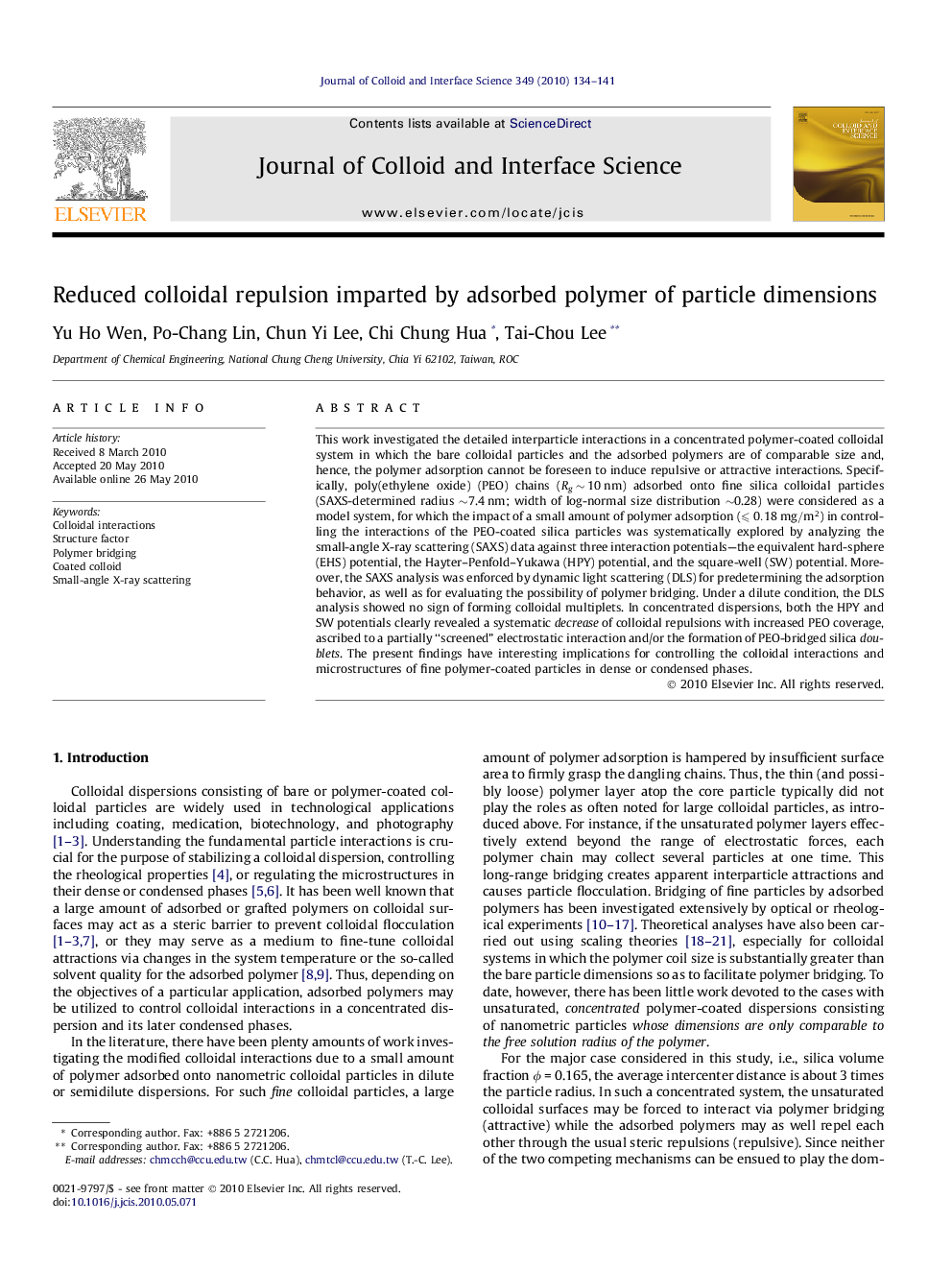| Article ID | Journal | Published Year | Pages | File Type |
|---|---|---|---|---|
| 609591 | Journal of Colloid and Interface Science | 2010 | 8 Pages |
This work investigated the detailed interparticle interactions in a concentrated polymer-coated colloidal system in which the bare colloidal particles and the adsorbed polymers are of comparable size and, hence, the polymer adsorption cannot be foreseen to induce repulsive or attractive interactions. Specifically, poly(ethylene oxide) (PEO) chains (Rg ∼ 10 nm) adsorbed onto fine silica colloidal particles (SAXS-determined radius ∼7.4 nm; width of log-normal size distribution ∼0.28) were considered as a model system, for which the impact of a small amount of polymer adsorption (⩽0.18mg/m2) in controlling the interactions of the PEO-coated silica particles was systematically explored by analyzing the small-angle X-ray scattering (SAXS) data against three interaction potentials—the equivalent hard-sphere (EHS) potential, the Hayter–Penfold–Yukawa (HPY) potential, and the square-well (SW) potential. Moreover, the SAXS analysis was enforced by dynamic light scattering (DLS) for predetermining the adsorption behavior, as well as for evaluating the possibility of polymer bridging. Under a dilute condition, the DLS analysis showed no sign of forming colloidal multiplets. In concentrated dispersions, both the HPY and SW potentials clearly revealed a systematic decrease of colloidal repulsions with increased PEO coverage, ascribed to a partially “screened” electrostatic interaction and/or the formation of PEO-bridged silica doublets. The present findings have interesting implications for controlling the colloidal interactions and microstructures of fine polymer-coated particles in dense or condensed phases.
Graphical abstractThe reduced colloidal repulsion in concentrated dispersions is ascribed to polymer bridging and/or a partially screened electrostatic interaction.Figure optionsDownload full-size imageDownload high-quality image (121 K)Download as PowerPoint slideResearch highlights► Colloidal attractions can be introduced by adsorbed polymer of sizes comparable to particle dimensions. ► The adsorbed polymer results in a reduced surface potential. ► The unsaturated polymer layer is unable to form an effective repulsive shell that is dominant over the electrical double layer.
